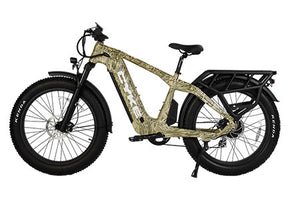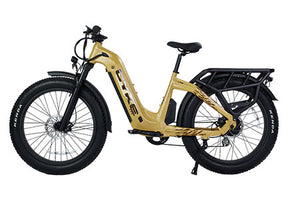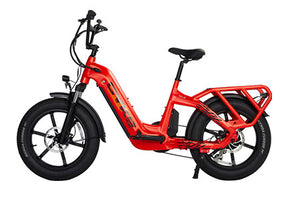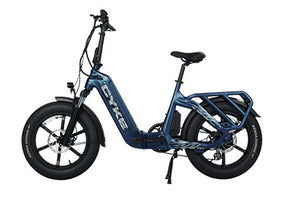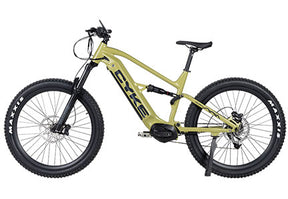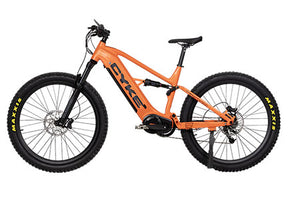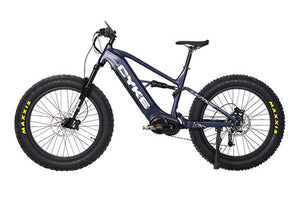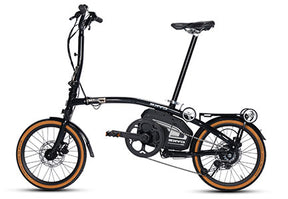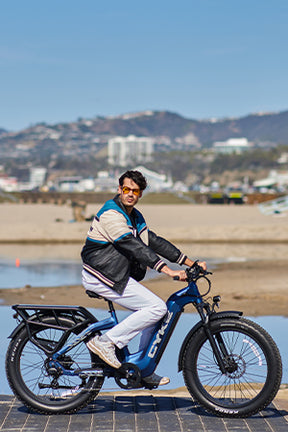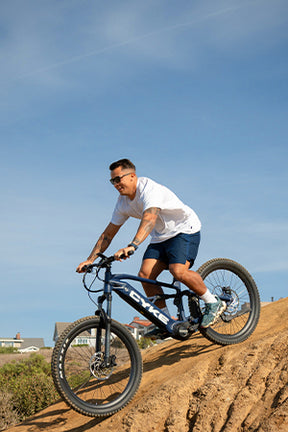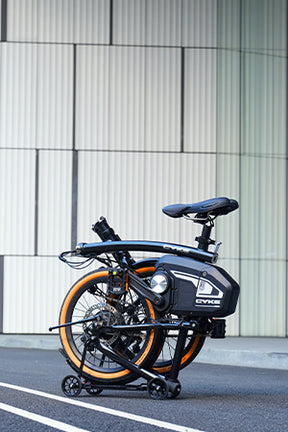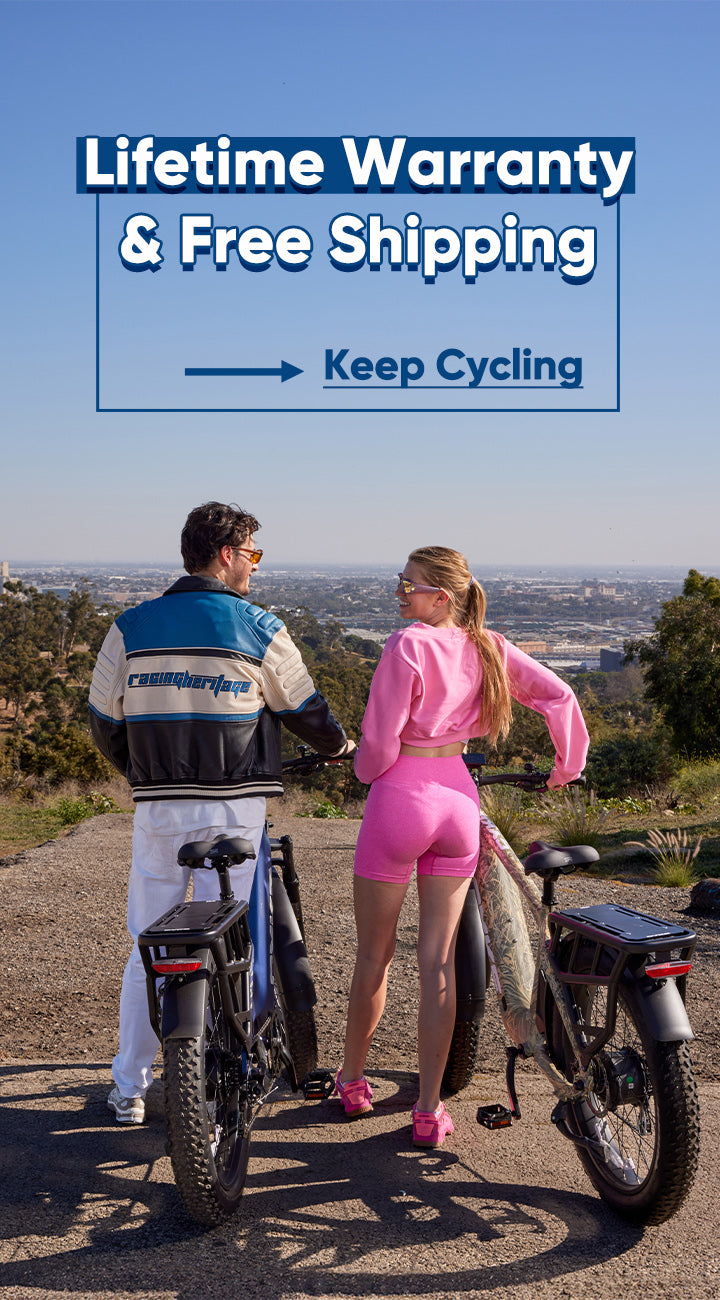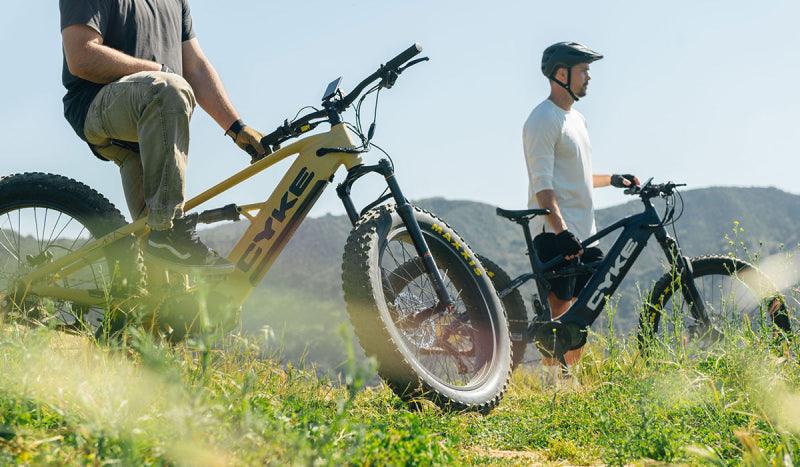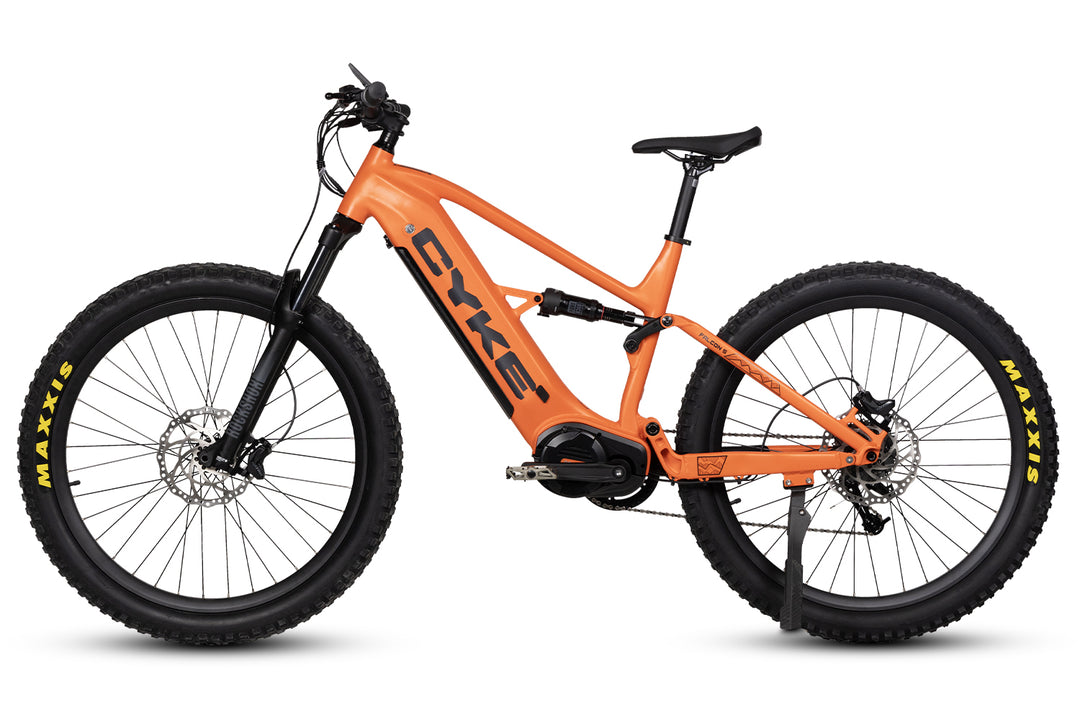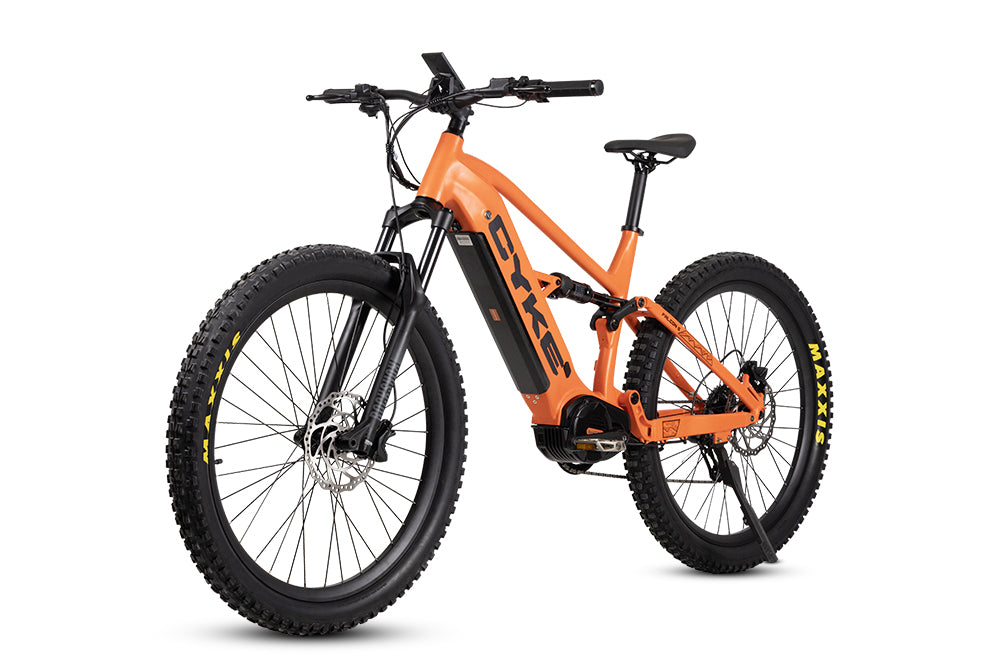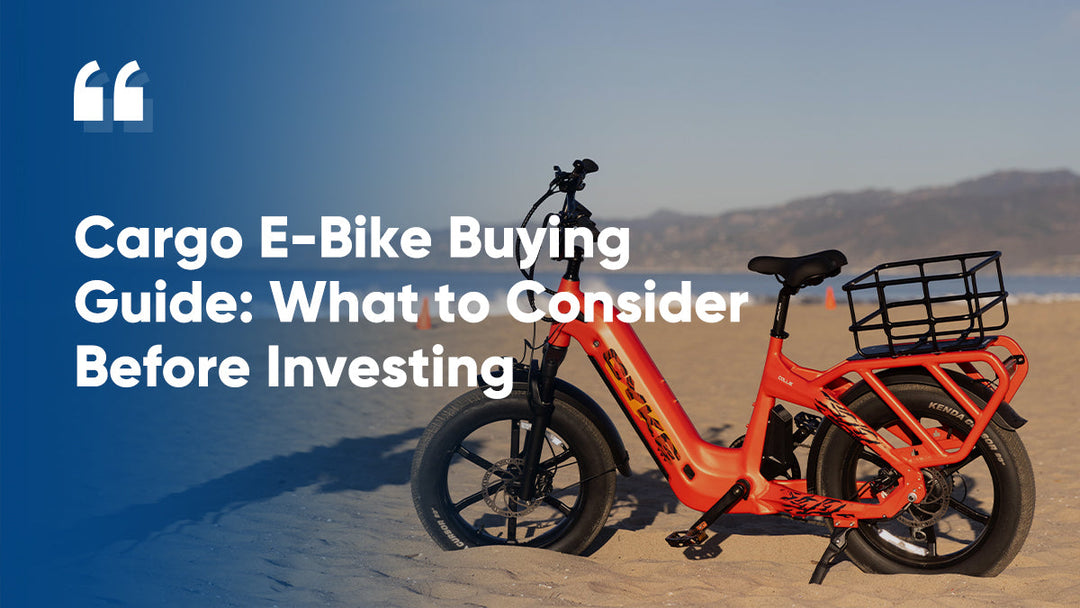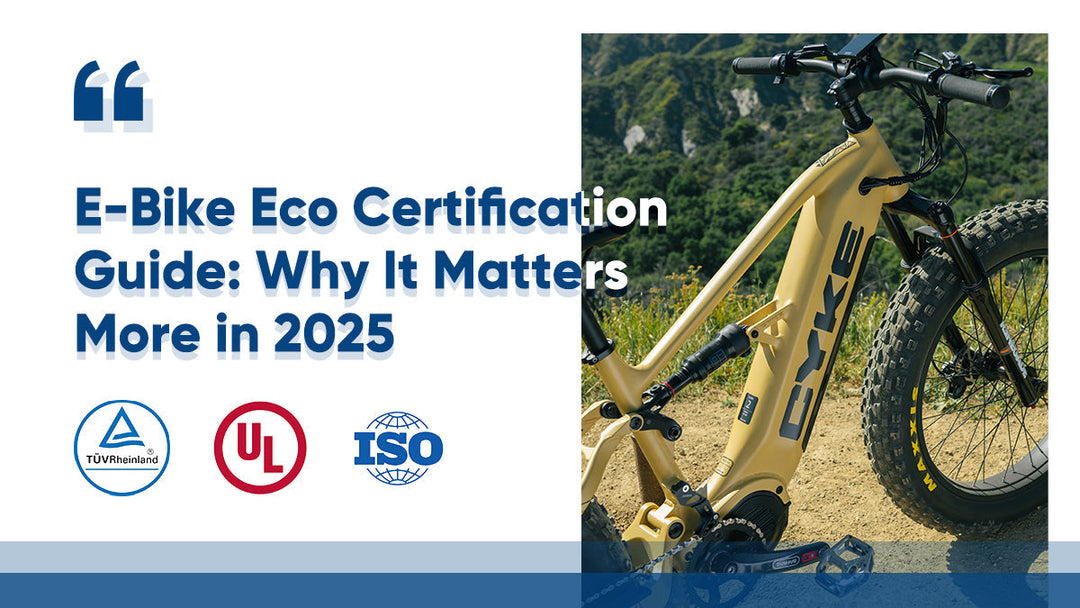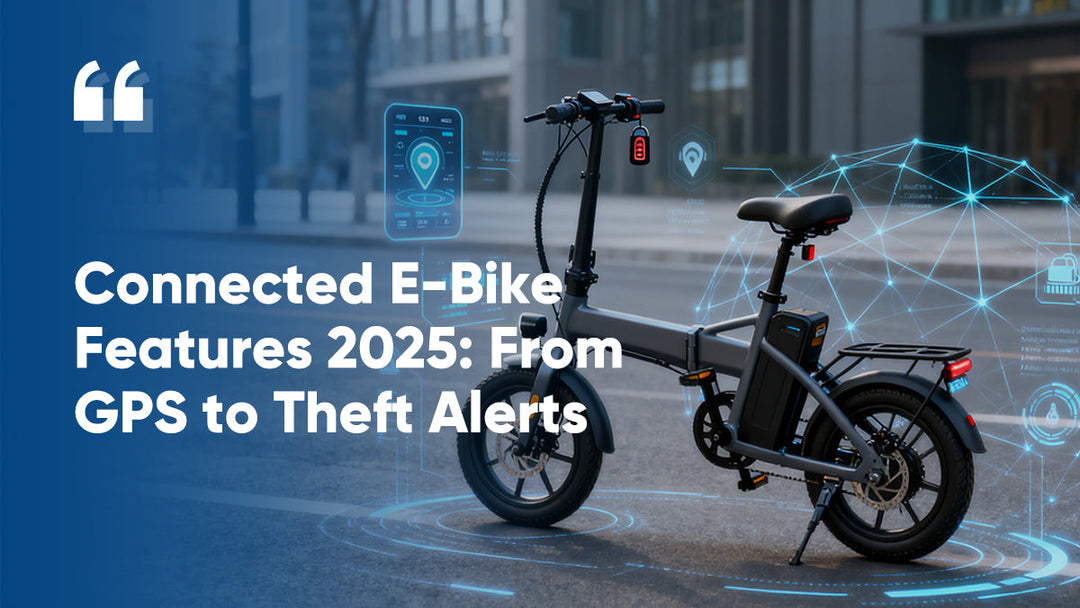Rated vs. Peak Power: A Complete eBike Wattage Guide
If you have been looking at electric bikes, you have probably noticed terms like “rated power” and “peak power” popping up. These numbers are often used in ads and spec sheets.
Some brands even highlight the peak power to make the motor sound stronger than it really is. But what really matters is understanding the difference between the two.
This guide will break it down. You’ll learn what rated and peak power actually mean. You’ll see why both matter. And by the end, you’ll have a better idea of how to choose the right eBike Wattage for your needs.
What is Rated Power in eBikes?
Definition and Industry Standards
Rated power is the steady power your eBike’s motor can deliver over a long period without overheating or getting damaged. It’s the amount of power the motor can handle continuously, think of it as the motor’s normal, everyday workload.
It tells you how well the bike will perform on regular rides, like going to work or cruising around the neighborhood.
You’ll see rated power listed as 250W, 500W, or 750W on most eBikes. This is the level of ebike power that the bike can keep up for a long time without any issues.
Now, here’s where it gets interesting.
Different places have different rules about rated power. In the European Union, eBikes are often capped at a 250-watt rated motor. That’s because EU laws define an eBike as a bicycle, not a motor vehicle, only if the motor stays under this limit.
In the United States, the rules are a bit more relaxed. Many eBikes come with rated motors of up to 750 watts, which means more power for hills, speed, or carrying extra weight.
So, rated power isn’t just a random number; it also determines what’s legal on roads, bike paths, or trails in your area.
How It Affects Daily Performance
Rated power directly influences how your eBike performs day after day. If you are cruising long distances or commuting every day, this is the number that keeps your eBike humming along smoothly.
A higher rated power means your motor can handle tougher conditions, like headwinds or slight hills, without straining. It also helps your motor last longer. When a motor runs within its rated power, it lasts longer and doesn’t overheat as much, which means fewer repairs down the road.
There’s a legal side too. As mentioned above, rated power helps classify your eBike under local laws. Too much power, and you might need a license or be banned from bike paths. So, if you are in a city with strict rules, this is something to watch out for.
Overall, rated power tells you what your bike can comfortably handle during regular rides.
Rated Power in CYKE eBike Models
Take the CYKE Falcon S, for instance. It’s got a rated power of 1000W, which is quite high. That means this 1000w electric bike can keep delivering 1000 watts steadily, whether you are riding across town, steep hills, longer rides, or heavier loads, without overheating. This makes it great for serious riders, weekend cyclists, or anyone who requires reliable power day after day.
What Is Peak Power in eBikes?
What It Means and When It’s Used
Peak power is the highest eBike Wattage the motor can pump out, but only for a short time. This usually happens when you need an extra push, like when climbing a steep hill, accelerating from a stop, or carrying a heavy load. It’s not something the motor can keep up for long. It’s just there to help in those tough moments.
Think of it like a sprint. Your legs can give a strong burst of energy for a few seconds, but you can’t keep sprinting forever. It’s the same with your eBike motor.
This power spike lasts for just a few seconds, usually under a minute. After that, the motor returns to its rated power to prevent overheating.
Why It’s Not Sustainable for Long Rides
Peak power is impressive, but it’s not something your motor can handle all the time. If you try to ride using peak power for too long:
- The motor gets hot quickly.
- The battery drains faster.
- The system could wear out sooner than expected.
That’s why you shouldn’t base your purchase solely on the peak power number. For most of your trip, you’ll rely on rated power, with peak power jumping in when the going gets tough.
CYKE’s Peak Power Capabilities
Let’s look at the CYKE Falcon S again. While its rated power is 1000W, it can hit up to 1100W peak power during intense climbs or fast starts. So, when you hit a steep incline or need to get moving fast, the motor can crank up to 1100 watts for a short time. It’s perfect for those moments when you need a little extra muscle, like powering up a hill with a backpack full of groceries.
Rated vs. Peak Power: Key Differences
Side-by-Side Comparison
Let’s put these two side by side to see how they stack up. Here’s a simple table to break it down:
|
Category/Features |
Rated Power |
Peak Power |
|
Duration |
Suitable for continuous use over time. |
Only for short bursts of extra power. |
|
Performance |
Steady and reliable for regular rides |
Big boost for challenging spots |
|
Heat Generation |
Low |
High |
|
Battery Consumption |
Energy-efficient and ideal for long-distance rides. |
Drains the battery faster due to higher energy demands. |
|
Relevance |
Perfect for commuters and casual riders |
Key for off-roaders or heavy-duty tasks |
|
Use Case |
Daily riding, cruising |
Hills, quick starts, heavy loads |
Which One Matters More?
So, which should you focus on? It depends on how you plan to ride.
- If you mostly commute in the city or take long rides on flat ground, rated power is what you’ll lean on most. It keeps things efficient, legal, and smooth.
- If you enjoy off-road adventures, live in a hilly area, or carry heavy cargo, both rated and peak power are important. You’ll need that extra boost from peak power, but rated power will still carry the load most of the time.
For most people, a mix of both works best. You want enough rated power for your usual rides and enough peak power to handle the occasional challenge. Think about your routine; where do you ride, and what do you need?
How to Choose the Right Power Setup for You
Match Power to Riding Style
Let’s look at different rider types and what power ranges might suit them:
- Urban Commuters: 250W to 500W rated power is usually enough. You won’t need much peak power here, plus, you get a legal ride with efficient use and a smooth experience on paved roads.
- Trail Riders: 750W electric bike to 1000W rated motors with a peak power of 750 to 1000 watts offer more strength for uneven terrain and quick climbs.
- Cargo or Family Riders: If you are pulling a trailer or carrying heavy loads, 750W or more rated power and motors with at least 1100 watts of peak power can handle the strain without bogging down.
Think Beyond Wattage
Power isn’t everything, though. Other factors impact performance too:
- Torque: This is the twisting force that gets you moving. More torque means faster starts and better hill climbing.
- Battery size: A bigger battery means longer range and more sustained power delivery. Make sure your battery matches your power needs.
- Sensors: Some eBikes use torque sensors (based on how hard you pedal) or cadence sensors (based on how fast). Torque sensors provide a natural pedaling feel, while cadence ones are simpler but can feel jerky.
Conclusion – Power Is Just the Start
There you go. Rated power keeps your eBike steady and reliable for everyday use, while peak power gives you that extra push when you need it.
But don’t get stuck on eBike Wattage alone. Consider the whole system, motor, battery, sensors, and your riding style. Once you know what each part does, picking the perfect eBike becomes a lot easier.
In the end, it’s not just about how powerful your eBike is. It’s about how well that power fits into the way you ride. With this info, you are ready to pick an eBike that’s just right.
